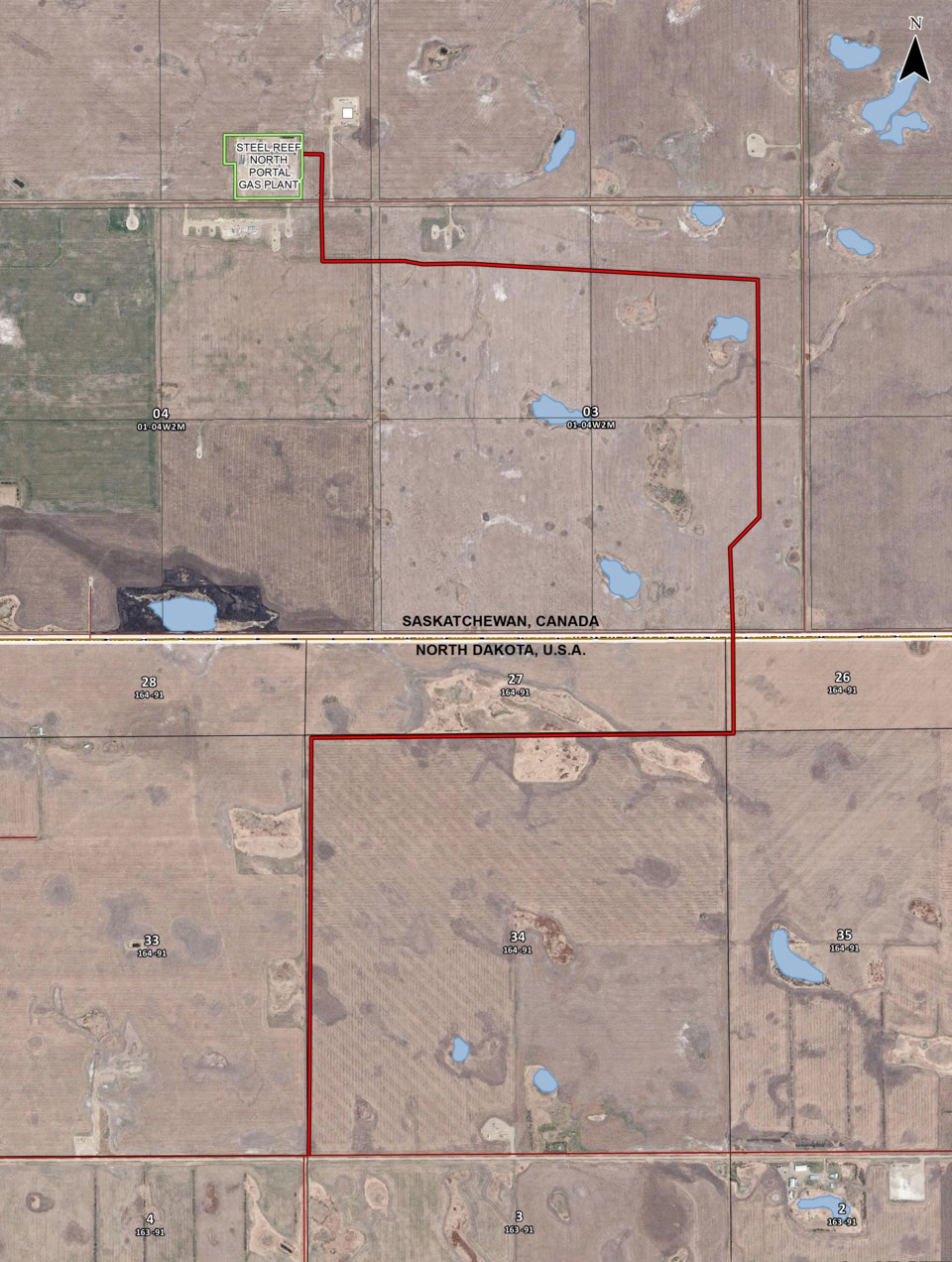North Portal – As far as cross border pipelines go, there are large ones, controversial ones like the still-delayed Keystone XL project, and then there are smaller ones that, if they didn’t cross a border, would probably never get noticed.
Steel Reef Infrastructure Corp. is proposing one of the latter – a 10.75 inch pipeline that would run just across the border from just south of the border, near Portal, N.D. to, its North Portal gas plant.
The project is being called the South Saskatchewan Access Pipeline.
The total distance for the proposed pipeline is seven kilometres (4.35 miles), but as the crow flies, the actual distance between the origin and terminus of the pipeline is much shorter than that. The pipeline takes a zig to the east, crosses the border, then zags to the west, towards the gas plant.
As the pipeline crosses an international border, it requires approval from both the Canadian and U.S. governments, including the same “Presidential Permit” that eluded Keystone XL for the better part of a decade. It will also require approval from the National Energy Board (NEB) in Canada. The NEB process is expected to take six months, while the U.S. Federal Energy Regulatory Commission (FERC) could take up to a year.
Cross border pipelines have been issues in recent years. In May 2016, when then-presidential candidate Donald Trump was asked by Pipeline News in Bismarck, N.D., about another proposed international pipeline, TransCanada’s Upland Pipeline, Trump said he was not familiar with it, but his bias would be to approve. (The Upland proposal actually runs relatively close to Steel Reef’s project.)
Shortly after he was inaugurated, Trump invited TransCanada to resubmit its application for Keystone XL. He subsequently approved it, which might bode well for other projects.
Steel Reef’s proposed pipeline would have a capacity of 900,000 cubic meters of natural gas per day, gathered from existing oil wells in the Burke County region of North Dakota. The solution gas would be sour, up to three per cent hydrogen sulphide.
The North Dakota gas is liquids-rich, according to Chris Anderson, Steel Reef facilities engineer and project manager. It’s of a very similar nature to what they are processing on the Saskatchewan side of the border.
In recent years, the North Dakota government has clamped down on gas conservation, requiring that oil companies submit a plan for gas collection before a well permit is even issued. The result has been a substantial increase in the percentage of gas that is captured in the state, as opposed to flared.
Anderson said they had heard from producers in North Dakota who were concerned they wouldn’t be able to produce oil without getting an egress for gas capture.
As part of the approval process, Steel Reef held a public meeting in North Portal on Aug. 28.
Austin Voss, chief operating officer with Steel Reef, said on Aug. 24, “If approved, it could potentially, but not necessarily, lead to expansion,” of the North Portal plant.
He added, “We will always be willing to expand if the gas is there.”
Processing North Dakota gas wasn’t part of the initial impetus behind the North Portal gas plant, however.
In recent years Steel Reef has become prominent in gas plant operations in southeast Saskatchewan, building plants at North Portal and Alameda, as well as acquiring 50 per cent ownership in the Nottingham and Kisbey gas plants. The company also has an oil transmission line and storage at Plato in western Saskatchewan and other properties in Alberta.




